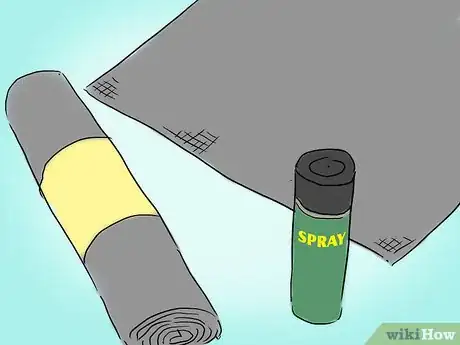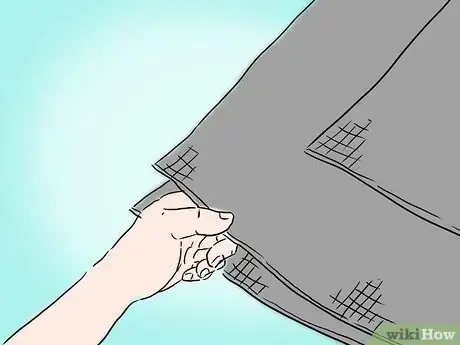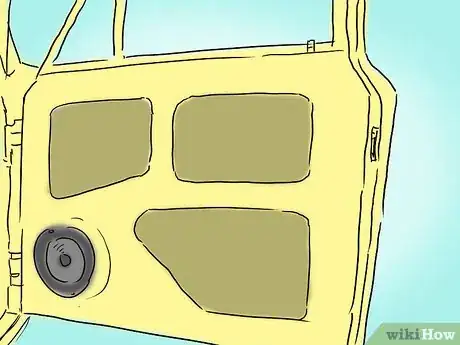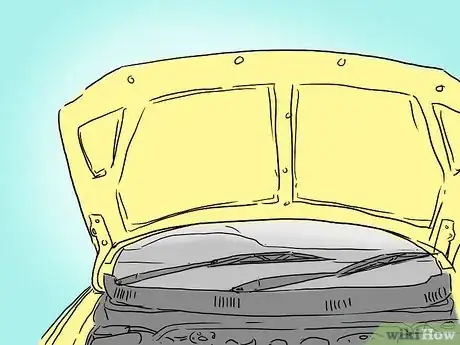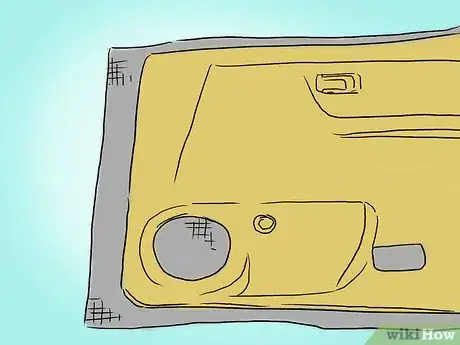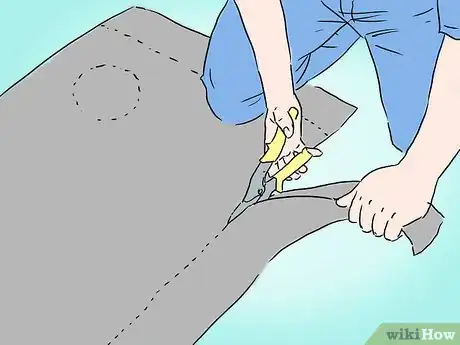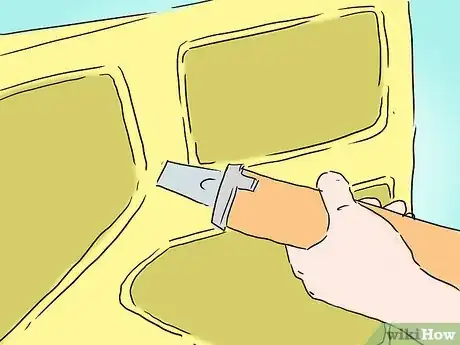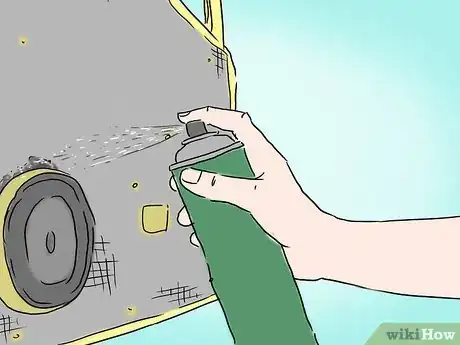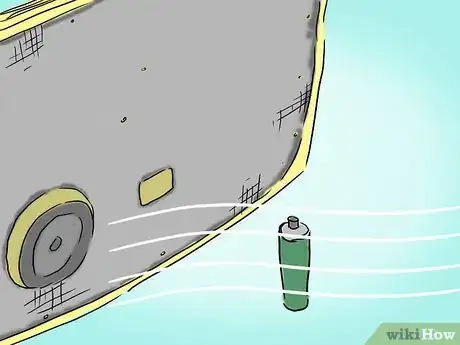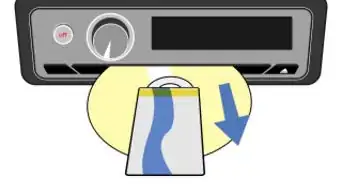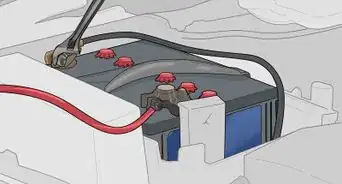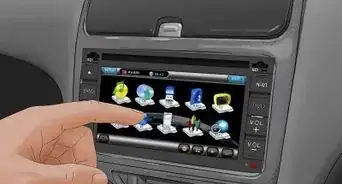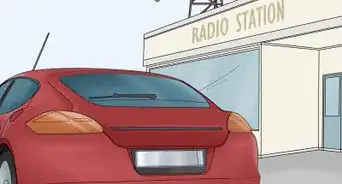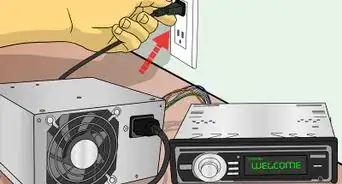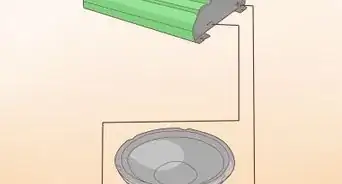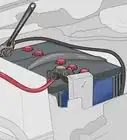X
wikiHow is a “wiki,” similar to Wikipedia, which means that many of our articles are co-written by multiple authors. To create this article, 9 people, some anonymous, worked to edit and improve it over time.
This article has been viewed 342,797 times.
Learn more...
Although making your car entirely soundproof to outside noise is impossible, you can greatly reduce the amount of racket and vibrations by sound-deadening your car. Not only will this create a better ambience within your car, but it will also allow your audio system to excel without the chatter or resonating panels or a trembling frame.
Steps
-
1Choose damping materials in which you plan to dampen your car with such as mats, foams, sprays, or insulation; it is recommended to use a combination of these products in order to achieve maximum damping. Theses damping materials absorb sound waves, eliminate resonance, and diminish vibrations.[1]
- Damping mats: These are simple to install damping materials and are used to cover panels in your car to help with sound deadening. They are typically made of either stryene-butyadine rubber or asphaltic panes with adhesive backing and either lower the resonant frequency of the panel, or transform the sound vibrations into heat depending on the damping material used in your particular mats.
- Sprays: These come in either professional cans requiring compressors and paint guns for application or easy to use aerosol cans. Sprays are used in situations where matting would be too bulky to fit or the weight of the matting would be too heavy such as door panels or kick panels.
- Foams: Foams come in either sheet or spray form. The foam sheets are used just as the damping mats are by laying them over car panels to absorb vibration. Instead of converting the vibrations to heat, as the mats do, the foam sheets dispersing the energy throughout the sheet.
- Insulation: This damping material is a thick pane of fibers that absorb sound and is laid underneath the carpet. The most typical type of insulation is jute or micro jute. Although insulation is less effective in regard to sound deadening, is does add thermal insulation to the interior of your car as well as creates a plusher carpet
-
2Add weight to panels using damping mats. This will help with the panel's tendency to vibrate causing unwanted noise.Advertisement
-
3Place the damping mats between 2 of the door panels that are in close proximity to each other, to help reduced the vibrations within the space between the 2 door panels.[2]
-
4Place the damping mats inside an engine compartment to reduced rattling noises. The mats contain metal foil backing in order to increase the mat's heat resistance making them able to be near the heat of the engine. Apply them using a contact adhesion glue found at your local auto shop.[3]
Advertisement
Method 2
Method 2 of 2:
Insulation
-
1Measure the door panels and carpeted areas along the floor you will apply the damping materials of your choice to.
-
2Slice the insulation and/ or matting according to the measurements of the area you plan to place the damping materials. If installing insulation, be sure to pull the carpeting from the body of the car before proceeding to the next step.[5]
-
3Paint or spray contact adhesion glue to the body of the car in which you plan to place the damping mats and insulation.
-
4Place the damping materials on top of the glue, pressing firmly to assure adhesion.
-
5Spray any foam and spray sound deadening materials in each crevice as necessary.
-
6Allow glue and sprays to cure, or dry, in accordance with the directions on each material.
Advertisement
Community Q&A
-
QuestionWould the described addition of sound deadening materials adversely effect the car's ability to float in the event of accidental immersion in deep water? Are the materials flame resistant?
 Community AnswerIs your car a boat car? Your car doesn't have much ability to float, and sound deadening materials aren't really going to change that.
Community AnswerIs your car a boat car? Your car doesn't have much ability to float, and sound deadening materials aren't really going to change that. -
QuestionWhy sound proof my car?
 Community AnswerAlthough most cars have some form of sound damping already, lots of road noise can enter the car and raise the "noise floor" making it so that you have to play your music louder to have the same perceived loudness. In addition, many cars have panels that resonate and vibrate and certain frequencies (usually the subwoofer range) and cause the panels to rattle, coloring the sound and ruining the clean tone of the speaker. By adding mass to the panels, the resonant frequency is lowered below hearing level of 20 Hz (which isn't produced by most speakers) and just like that, no more annoying rattles.
Community AnswerAlthough most cars have some form of sound damping already, lots of road noise can enter the car and raise the "noise floor" making it so that you have to play your music louder to have the same perceived loudness. In addition, many cars have panels that resonate and vibrate and certain frequencies (usually the subwoofer range) and cause the panels to rattle, coloring the sound and ruining the clean tone of the speaker. By adding mass to the panels, the resonant frequency is lowered below hearing level of 20 Hz (which isn't produced by most speakers) and just like that, no more annoying rattles. -
QuestionCan I sound deaden my car on my own, or do I need to go to a workshop to do so?
 Community AnswerYou can do it yourself. You wouldn't need a workshop for everything described here, nor would you benefit from a car lift or anything. However there's always the possibility of damaging plastic panels when taking them off, so, be prepared for that. It's preferable to do these kind of experiments on a cheap car, not on your brand new pride and joy.
Community AnswerYou can do it yourself. You wouldn't need a workshop for everything described here, nor would you benefit from a car lift or anything. However there's always the possibility of damaging plastic panels when taking them off, so, be prepared for that. It's preferable to do these kind of experiments on a cheap car, not on your brand new pride and joy.
Advertisement
Things You'll Need
- Damping materials
- Contact adhesion glue
- Measuring tape
- Razor blade
- Paint brush
References
- ↑ https://speakerchampion.com/install-automotive-sound-deadening-material/
- ↑ https://www.youtube.com/watch?v=YBBY1y9Nq84
- ↑ https://www.carmudi.com.ph/journal/heres-how-to-soundproof-your-vehicle/
- ↑ https://www.youtube.com/watch?v=FXRC4ELTyMU
- ↑ https://www.youtube.com/watch?v=PM1j28hMKmc
- http://www.teamrocs.com/technical/pages/sound_proofing.htm
About This Article
Advertisement
